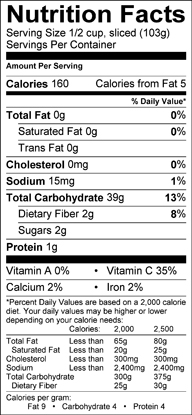Select firm, red cherries with stems attached. Avoid soft, shriveled or blemished cherries.
For home use, as dessert, the fruits are picked when fully ripe. For processing or preserving, they can be harvested when slightly immature, when they are turning from yellow to red. As there is continuous fruiting over long periods, picking is done every day, every other day, or every 3 days to avoid loss by falling.
The fruits are usually picked manually in the cool of the early morning, and must be handled with care. For immediate processing, some growers shake the tree and allow the ripe fruits to fall onto sheets spread on the ground. Harvested fruits should be kept in the shade until transferred from the field, which ought to be done within 3 hours, and collecting lugs are best covered with heavy canvas to retard loss of ascorbic acid.
Ripe cherries must be carefully handled to avoid bruising and should be used as soon as possible or frozen for future use. Store cherries in the refrigerator for up to 5 days.
Ripe Barbados cherries bruise easily and are highly perishable. Processors store them for no more than 3 days at 45º F (7.22º C). Half-ripe fruits can be maintained for a few more days. If longer storage is necessary, the fruits must be frozen and kept at 10º F (-12.22º C) and later thawed for use. At one time it was believed that the fruits could be transported to processing plants in water tanks (as is done with true cherries) but it was discovered that they lose their color and ascorbic acid content in water.
At room temperature–85º F (29.44º C) in Puerto Rico–canned Barbados cherries and also the juice lose color and fresh flavor and 53% to 80% of their ascorbic acid content in one month, and metal cans swell because of the development of CO2. Refrigeration at 44.6º F (7º C) considerably reduces such deterioration. Juice in the home refrigerator will lose 20% of its ascorbic acid in 18 days. Therefore, the juice and the puree should be kept no longer than one week.
Fat free, saturated fat free, cholesterol free, low in sodium, an excellent source of vitamin C and a good source of vitamin A
